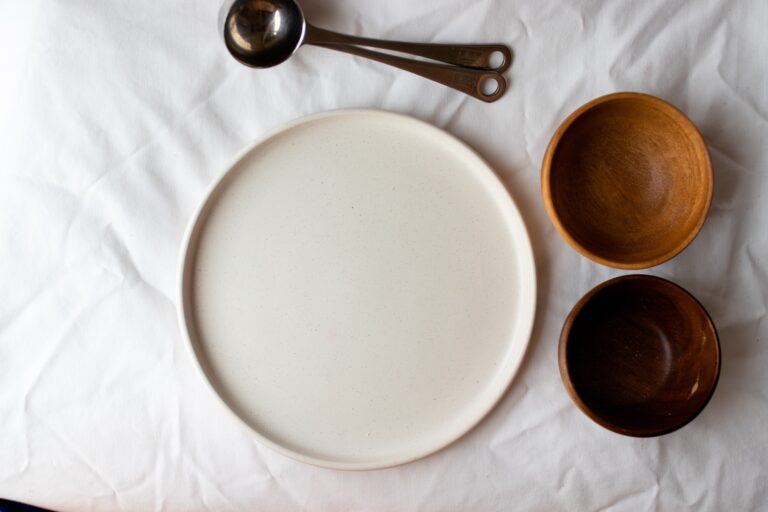
Suzan Sammons homeschools her children and is studying for a masters degree in nutrition. She is a writer and editor in southwest Ohio.

Prayer, Fasting, and Almsgiving: the three calls of Lent.
If I exhort you to spend more time in prayer during Lent, you probably won’t argue with me. If I encourage you to increase your charitable giving, most readers will admit they could be more generous. But if I ask you to fast more?
I’ll hear that fasting makes you tired and grouchy, gives you a headache, and renders it impossible to complete your day’s work. St. Anthony of the Desert lived to be 105, fasting daily til dark and then only eating bread, salt, and oil. The early Christians fasted regularly, led by their bishops. Our (fully human) Lord fasted for 40 days. But somehow forgoing food for a day has become a severe trial for the modern Catholic.
Can it be that modern man is just not cut out too fast? You may be surprised to learn that 1,000 years ago many monasteries answered that question “Yes.”
Early monasteries generally prescribed for themselves regular fasting, a daily practice in which the first meal was not taken (on most days) until the ninth hour (3:00), major feasts excepted. For a variety of reasons, all of which can be reduced to “human nature,” relaxations in this practice began to occur.
First, the meal was moved closer to noon. However, this move resulted in feelings of hunger surfacing in the evening, such that a “light collation” after sunset became a common practice.
Many of the monks affected acknowledged that the relaxation of true daily fasting was a concession, and they desired to make up for this loss. To address this, more extensive abstinence was implemented. Though the monks ate more often than the monks of old, what they ate had less variety and overall was of poorer nutritional value.
In some places, communities became sick and weak. The conclusion in these stricken monasteries was that perhaps the then-modern man had a constitution that was just not as robust as that of the earliest monks. Perhaps the modern man was just not cut out too fast.
Can the same be said of us? We certainly don’t suffer from a lack of variety in our diets, at least not one we are unable to overcome by making smart choices. No, “lack” is hardly the word that springs to mind when we ponder the physique common in our country, whereby in 2020 the prevalence of obesity among those aged 20 and over had risen to 41.9%.
Clearly, it’s not undernourishment that afflicts us, but what has been called “overnutrition.” That term though belies the true state of things. Americans don’t take in too much fiber, too many healthy fats, or too much Vitamin B12. They aren’t indulging in excessive quantities of tuna, quinoa, and spinach. The root of the obesity problem in the U.S. is the ready availability of highly palatable and highly processed foods that constitute the daily intake of most Americans.
Yet the obesity statistic is only one sign of our Age of Excess, and not the least concerning one. The preponderance and constant availability of palatable, arguably addictive, foods is mirrored in the constant beck and call of other enticing activities with wellness implications. In behaviors like the use of social media, video games, and even online shopping, we see the pull to excessive use. Food companies are known to design their foods with increased use as the goal. “Betcha can’t eat just one.” Likewise, it’s no accident that the technologies used excessively by many people have been designed to habituate the consumer to increased use.
Perhaps this is what has given rise to the notion that the Lenten Fast need not be about food: there are a plethora of things we should be “giving up.” It’s common for friends to let you know they’re not implementing any kind of change in the way they’re eating during Lent this year because instead, they’re going to “fast” from Facebook or some other activity. The following quotation from St. Basil is a common accompaniment to the “Fasting from non-food” announcement: “True fasting lies is rejecting evil, holding one’s tongue, suppressing one’s hatred, and banishing one’s lust, evil words, lying, and betrayal of vows.”
It would be well for all of us to understand those words in the context of the more than 5,000-word homily on fasting from which they are taken (three homilies actually…perhaps the first “sermon series”). Here, St. Basil demonstrates the primacy of fasting as the Christian practice that accustoms all souls to battle with the forces of evil. Beginning with the original sin, which he notes was actuated as a failure to fast, he takes his listener on a tour of the Old Testament, demonstrating time and again that fasting wrought holiness while failure to fast led to sin.
Esau’s longing for a good meal led him to sell his birthright, and the chosen people feasted while Moses prayed on the mountain – a feast that ended in idolatry. Daniel, on the other hand, “ate no bread and drank no water for three weeks, [and] when he descended into the den, taught even lions to fast.”
Interestingly, St. Basil repeatedly connects fasting to good physical health, both as a blessing from God and a normal consequence of self-discipline, noting that doctors advise the sick man to eat only the necessities – just as soldiers, he reiterates, take only what is necessary as they journey toward war. “It is less dangerous to be convicted of abandoning your weapons in battle than to be seen abandoning the great weapon of fasting.”
Of course, St. Basil also describes the interior conversion that is fasting’s least visible effect. This is where the quote that seems to have been deemed most meme-worthy originates. Fasting, he tells us, means little when it is not accompanied by the growth in virtue that it is so well calculated to spur. The self-denial of fasting engenders in the Christian a habit of disciplining the will – of applying the whip to Brother Ass – that can inform every aspect of subduing the rebel inside and conforming oneself to Christ.
And so in truth, this idea of the primacy of growth in virtue is the bedrock of the argument for undertaking substantial fasting in our Age of Excess. Far from an outdated practice modern man no longer needs and is unable to accomplish, fasting is particularly suited to fit us for the battles of our times, where the clarion call of the world is always “MORE!”Far from an outdated practice modern man no longer needs and is unable to accomplish, fasting is particularly suited to fit us for the battles of our times, where the clarion call of the world is always “MORE!”Tweet This
I know how difficult it can be to fast. I facilitate a group on Facebook to help people commit to and succeed at regular fasts, and I often hear how a history of headaches, dizziness, irritability or fatigue during previous fasts makes people trepidatious about trying again. And I’ve helped people who have experienced those obstacles overcome them, largely through ignoring the Church’s current definition of fasting.
You know the drill: “one regular meal and two small meals which if added together would not exceed the main meal in quantity.” I’m here to tell you that this is a recipe for fewer people wanting to fast more than the absolute minimum of two days a year. It is easier to simply not eat (and you have to admit, defining fasting as “not eating” is a little less awkward).
Not eating means your body stays in the fasting state through the hours of the day before your evening meal (or until the next day, depending on how long you are fasting). With the “two small meals” plan, your body bounces between a digestive state and a fasting state all day.
For most people, this results in significant and prolonged hunger, while true fasting, done well, tends to increase energy as it continues. There are difficulties, yes, but practices like good hydration (which should include salt) and good eating habits when not fasting go a long way toward mitigating them.
To be clear, I am someone who used to be afraid to go without eating. It’s only the new look at fasting brought about by the Intermittent Fasting health trend that gave me the courage to try again – once my two-decade-long “I’m pregnant/nursing” pass expired.
As we begin Lent, we hope to devote more time to prayer, even to heed St. Paul’s admonition to “pray always.” For those of us in the world whose vocations call us to apply our minds to many problems throughout the course of the day, it is a struggle to answer the exhortation to constant prayer. But fasting is prayer of the body. If our minds must be redirected over and over from the distractions of this world back to the reality of heaven, our bodies can be in a continual state of prayer during a fast.
In a world that can never say “No” to any earthly pleasure, that kind of solemn, ascetic, sacrificial gift is just what is needed.